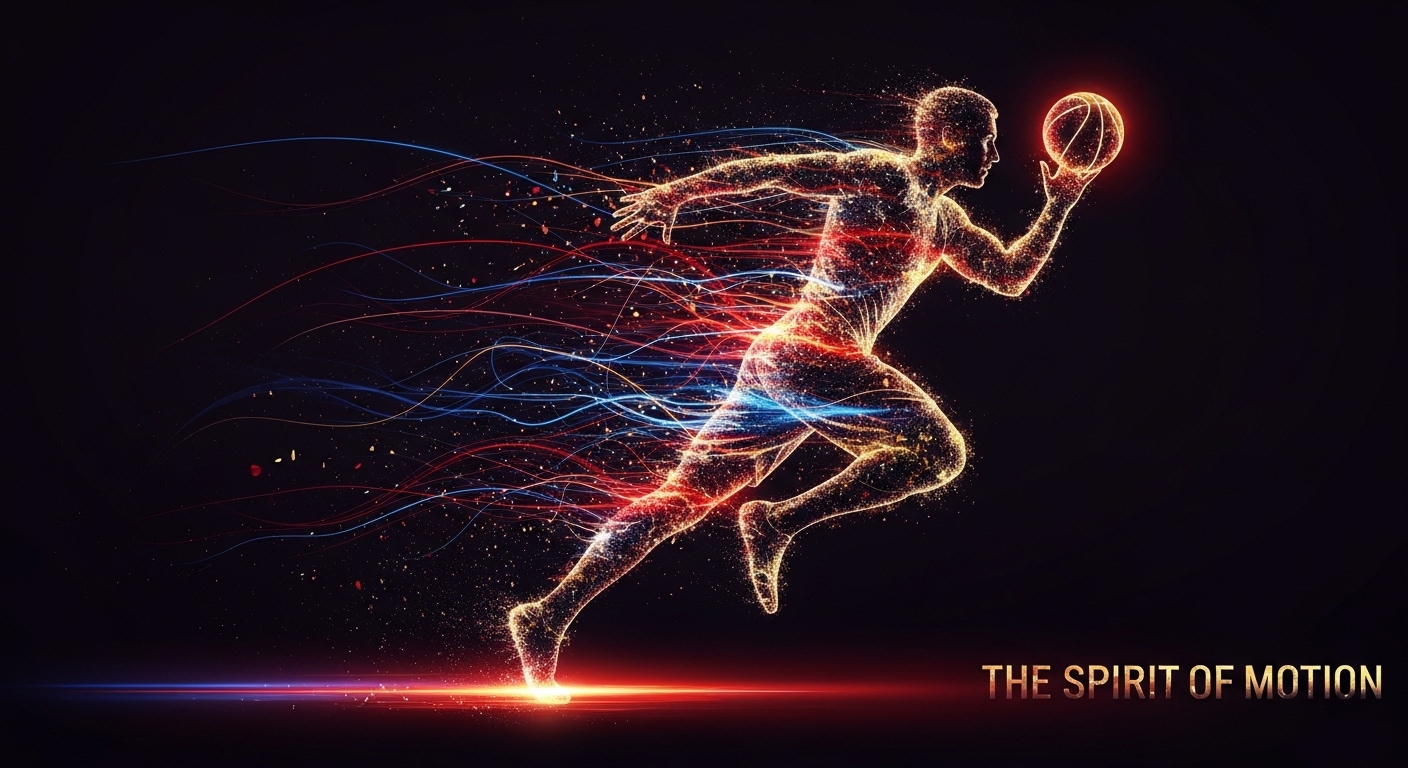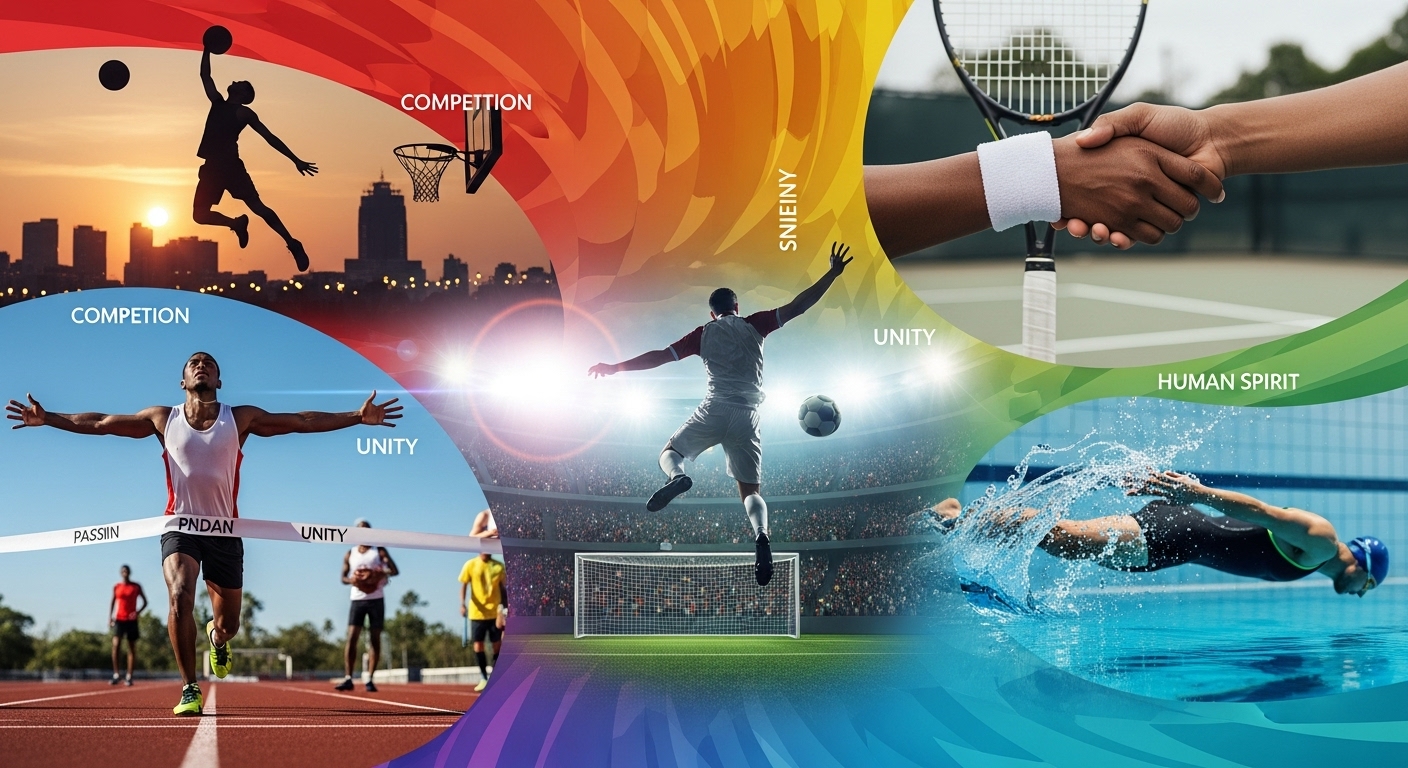Sports have been an integral part of human life since the dawn of civilization. They are more than mere games; they are reflections of culture, mirrors of society, and expressions of the human spirit. From ancient arenas where gladiators fought for glory to modern stadiums filled with passionate fans, sports have continuously evolved, uniting people across continents, generations, and beliefs. This is not just a story about games; it’s about human connection, perseverance, ambition, and the universal language of competition.
The Origins of Sports: Where It All Began
The history of sports is as old as human civilization itself. Ancient artifacts, cave paintings, and early records reveal that our ancestors engaged in physical contests not only for survival but also for entertainment and honor. In prehistoric times, sports often mirrored the daily challenges of hunting, combat, and endurance. Activities such as wrestling, running, and archery were essential survival skills that gradually transformed into organized competitions.
In ancient Egypt, sports had a dual purpose — they were both ritualistic and recreational. Pharaohs encouraged athletic contests as a way to honor the gods and celebrate physical prowess. In Greece, sports took on a sacred role, with the Olympic Games becoming a symbol of unity among city-states. Every four years, wars would cease so athletes could gather in Olympia and compete in disciplines such as discus throwing, javelin, and running. This spirit of peace and fair play laid the foundation for the modern Olympic movement centuries later.
Meanwhile, in ancient China, martial arts emerged as both a discipline and an art form. It wasn’t just about fighting; it was about balance, respect, and the pursuit of harmony between body and mind. Similarly, in Mesoamerican cultures, the famous ball game known as “Pok-ta-Pok” was more than just sport — it was a ritual tied to religion, politics, and the cosmos itself.
The Evolution of Modern Sports
As societies developed, so did their games. The Industrial Revolution played a crucial role in shaping modern sports. Urbanization brought people together in large cities, and with it came the need for recreation. Factories and schools began to promote organized sports as a way to improve discipline, teamwork, and physical health. This period also marked the rise of standardized rules and governing bodies, which gave sports structure and international appeal.
The 19th century witnessed the formalization of sports such as football, cricket, rugby, and baseball. England became the birthplace of many modern sports, exporting its games to colonies and influencing cultures across the globe. The codification of football in England, for example, eventually gave birth to two distinct sports — association football (soccer) and rugby.
In the United States, baseball emerged as the “national pastime,” while basketball and American football developed into major institutions. Across Europe, soccer became the beating heart of communities, a symbol of pride and identity. Each country began forming leagues, and soon international competitions became a reality.
The Globalization of Sports
The 20th century marked a turning point. Sports became a universal language, transcending boundaries of race, religion, and nationality. The Olympic Games were revived in 1896, and over time they evolved into the largest sporting event on Earth, celebrating diversity and unity through competition. Similarly, the FIFA World Cup emerged as a global phenomenon, watched by billions and capable of pausing entire nations during a single match.
Technological advancements also played a significant role. Radio broadcasts brought the excitement of live matches to households for the first time. Then came television, which transformed sports into a form of mass entertainment. Iconic moments such as Muhammad Ali’s boxing triumphs, Pelé’s goals, or Usain Bolt’s record-breaking sprints became part of collective memory.
Globalization also changed how athletes trained, traveled, and competed. Sports science emerged as a new discipline, integrating nutrition, psychology, and biomechanics to enhance performance. Athletes became global icons, representing not just their countries but brands, ideologies, and even social movements.
Sports and Society: Beyond the Game
Sports are more than physical contests; they are deeply entwined with social and cultural life. They have the power to inspire change, challenge injustice, and unite people in times of crisis. The playing field often becomes a stage for social commentary, where athletes use their voices to promote equality and peace.
In the United States, Jackie Robinson’s entry into Major League Baseball in 1947 was not merely a sports story — it was a breakthrough in the fight against racial segregation. Similarly, South Africa’s 1995 Rugby World Cup victory symbolized reconciliation after years of apartheid, uniting a divided nation under Nelson Mandela’s leadership.
Women’s participation in sports also represents a profound shift in societal attitudes. For centuries, women were excluded from athletic competition. Today, female athletes like Serena Williams, Simone Biles, and Megan Rapinoe are celebrated not only for their achievements but also for their advocacy of gender equality and empowerment. The rise of women’s sports leagues and record-breaking viewership for women’s events signal a long-overdue recognition of their contributions.
The Psychology of Sports: The Mind Behind the Muscle
While physical ability is essential, mental strength often determines success. The psychology of sports delves into motivation, confidence, focus, and resilience. Great athletes are not just physically gifted; they possess extraordinary mental discipline.
Pressure, expectation, and failure are constant companions in competitive sports. Managing stress, recovering from defeat, and maintaining confidence are as crucial as physical training. Visualization, mindfulness, and goal-setting have become key tools in modern athletic preparation.
Sports also teach vital life lessons. Athletes learn perseverance through failure, humility in victory, and respect for opponents. The concept of “sportsmanship” remains one of the most powerful moral teachings in human culture. It reminds us that integrity and fairness define true success more than trophies ever could.
Technology and Innovation in Sports
The modern era has witnessed an explosion of technology that has transformed how sports are played, officiated, and consumed. Instant replays, video assistant referees, motion tracking, and data analytics have revolutionized performance analysis and fairness.
Athletes now rely on wearable devices that monitor heart rate, sleep patterns, and recovery. Coaches use virtual reality simulations to prepare players for specific scenarios. Even fans experience games differently, through immersive broadcasts, augmented reality, and eSports — digital competitions that have grown into billion-dollar industries.
Equipment has evolved dramatically. From lightweight carbon-fiber bicycles to aerodynamic swimsuits and advanced running shoes, technology has redefined the limits of human capability. However, this progress also raises ethical questions about fairness, accessibility, and the spirit of competition. The line between natural talent and technological enhancement continues to blur, challenging the definition of what it means to be an athlete.
The Economic Power of Sports
Sports have become one of the most influential industries in the global economy. Major leagues and tournaments generate billions in revenue each year through broadcasting rights, sponsorships, and merchandise sales. Cities compete fiercely to host events like the Olympics or the World Cup, seeing them as opportunities for tourism, investment, and prestige.
Athletes themselves have become global brands. Figures like LeBron James, Cristiano Ronaldo, and Lionel Messi earn more from endorsements than from their actual sport. The fusion of athletics, entertainment, and marketing has created a new breed of celebrity — one that transcends national borders.
However, this commercialization also has a darker side. The pressure to profit can lead to exploitation, corruption, and inequality. Smaller sports struggle for visibility, while massive corporations dominate the industry. Balancing commercial success with ethical responsibility remains one of the great challenges of modern sport.
Sports and Education: Building the Future
Sports are not confined to professional arenas; they are vital components of education and youth development. School and collegiate athletics foster teamwork, leadership, and discipline. For many young people, sports offer a sense of belonging and a path to opportunity.
Physical education promotes health and wellness, teaching children the importance of fitness and active living. Moreover, the values learned through sports — perseverance, respect, and fair play — contribute to character formation. Many educational institutions now emphasize a balance between academics and athletics, recognizing that success in one can reinforce success in the other.
In developing regions, sports can be a powerful tool for social development. Community programs use games to promote inclusion, reduce crime, and empower marginalized groups. In this sense, sports become not just a pastime but a catalyst for transformation.
The Role of Fans: The Heartbeat of Sports
Without fans, sports would lose much of their magic. The energy of a roaring crowd, the chants, the colors, the emotions — all contribute to the atmosphere that makes competition electric. Fans are not passive spectators; they are participants in the spectacle.
Supporters form communities that transcend geography. Whether gathered in local pubs or cheering from home, fans share a collective identity tied to their favorite teams and players. The bond between fans and sports often passes through generations, becoming a part of family and cultural heritage.
However, the passion of fandom can also have darker aspects — violence, intolerance, and extreme rivalries sometimes overshadow the spirit of the game. Promoting respect, inclusivity, and positive support is essential to preserving the beauty of sports culture.
The Future of Sports: A New Era Begins
As the world continues to evolve, so too will sports. The future promises exciting possibilities — and new challenges. Technology will continue to push human limits, while artificial intelligence and data analytics redefine training and strategy. Virtual reality and metaverse experiences may revolutionize how fans engage with games, blurring the line between the physical and digital arenas.
Sustainability is another pressing concern. Major sporting events have significant environmental footprints, from construction to travel. The industry is now moving toward greener practices, with eco-friendly stadiums, renewable energy, and reduced waste initiatives leading the way.
Inclusivity will also shape the future of sports. Adaptive athletics for people with disabilities are gaining recognition, and more sports organizations are embracing diversity in gender, race, and orientation. The goal is clear: to make sports accessible and welcoming for all.
Meanwhile, eSports are redefining what competition means in the 21st century. Virtual athletes, competing in digital arenas, now attract millions of viewers and lucrative sponsorships. This new frontier challenges traditional notions of athleticism and opens doors to entirely new forms of sportsmanship and strategy.
Sports and the Human Spirit
Beyond records, medals, and championships, sports represent something far deeper — the indomitable human spirit. Every sprint, every swing, every leap tells a story of passion, sacrifice, and dreams. The beauty of sports lies in their universality: they remind us that no matter where we come from, we all understand victory, defeat, and the pursuit of excellence.
From children playing barefoot in the streets to athletes standing on Olympic podiums, the essence of sports remains the same — the joy of movement, the thrill of challenge, and the courage to compete. Sports celebrate our shared humanity, uniting us in laughter, tears, and awe.
In times of crisis, sports often provide hope. They offer moments of escape, unity, and collective healing. When the world seems divided, a single match, a single goal, or a single race can bring people together in ways nothing else can. That is the true power of sports — their ability to inspire and connect.
Conclusion: The Timeless Legacy of Sports
As we look at the long arc of history, one truth stands out: sports have always been and will always be a fundamental part of what it means to be human. They evolve with us, reflect our values, and push us toward greater heights. They teach us humility in loss, dignity in victory, and the importance of never giving up.
In every corner of the globe, sports tell stories of hope, courage, and resilience. They remind us that the playing field is a reflection of life itself — full of challenges, competition, teamwork, and triumph. The future of sports will continue to change, but its spirit — the pursuit of excellence, the celebration of humanity, and the joy of movement — will remain timeless.
Sports are not just games. They are a living testament to the power of dreams, the strength of community, and the beauty of human potential. Whether played on dusty fields or grand arenas, under bright lights or open skies, sports will always be the heartbeat of humanity — a song of unity, passion, and endless possibility.



